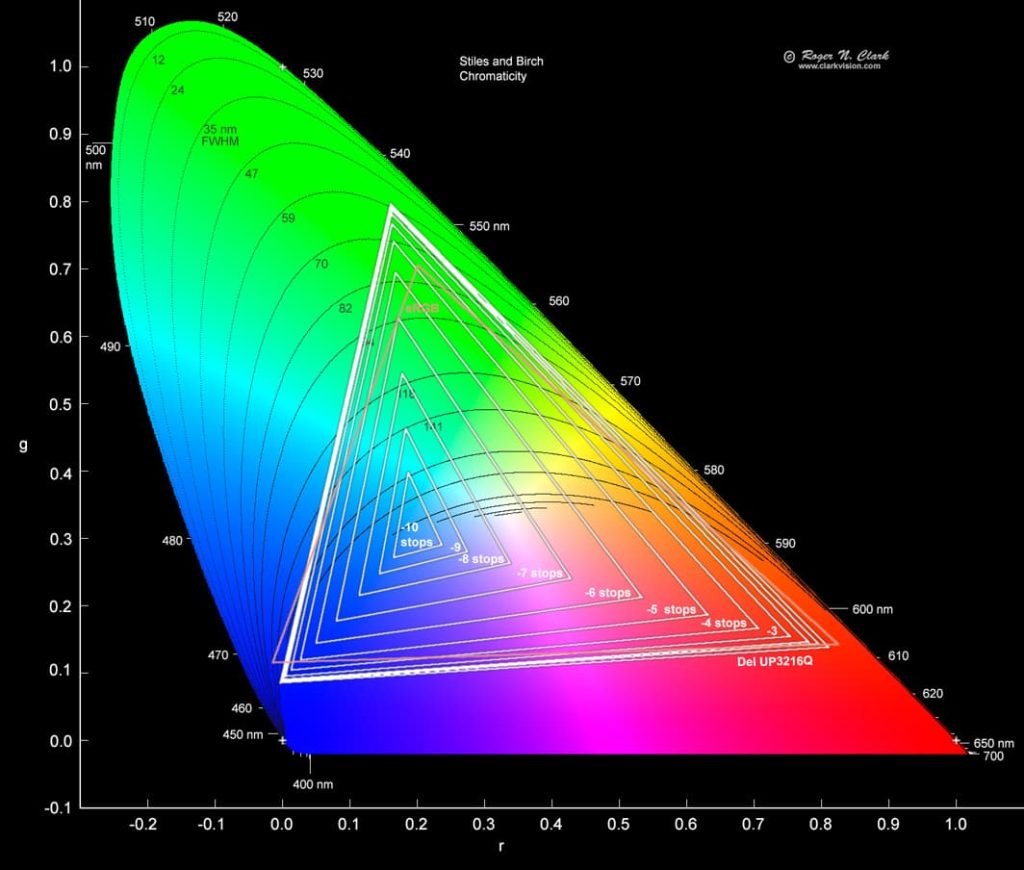What is the color gamut of an LED display?
The color gamut is very common in the LED display industry. Whether it is a splicing screen, an LED display, or a flexible curved LED display, the concept of color gamut is involved, which requires us to first find out what the color gamut is a concept. So what exactly is a color gamut? Color gamut is a method of encoding a color, and also refers to the sum of the colors that a technical system can produce. In computer graphics, a color gamut is some complete subset of colors. The most common application of color subsets is to accurately represent a given situation. For example a given color space or the color rendering range of an output device.

In the field of LED display, the color gamut refers to the range of the number of colors that the LED display can express. In the real world, the colors of the visible spectrum in nature form the largest color gamut space, which contains All colors that the human eye can see.
Along with the color gamut, there is also color space, and these two concepts generally appear together. Color space refers to the collection of various color numbers that a certain display device can express. The wider the color space, the more kinds of colors that can be displayed, and the larger the color gamut range.
But it seems that it is difficult for people to easily understand what the color gamut is, so the CIE International Illumination Association has developed a method for describing the color gamut: the CIE-xy chromaticity diagram.
In this coordinate system, the color gamut range that various display devices can represent is represented by a triangular area composed of RGB three-point connecting lines. The larger the area of the triangle, the larger the color gamut range of the display device. For our monitor users, we don’t need to look at so many color gamut standards, we only need to remember three of them, that is sRGB, Adobe RGB and NTSC. I believe that friends who have bought monitors must have seen them. Below we will focus on their concepts and relationships.
sRGB (standard Red Green Blue) is a color language protocol jointly developed by Microsoft and Epson, Hewlett-Packard, and other imaging giants. Applications have a common language for color. SRGB represents the standard three basic colors of red, green, and blue. When the sRGB color gamut value is 100%, it means that the display is very professional, and 96% to 98% is a common level, that is, a medium level. If the sRGB color gamut value cannot reach 100%, it means that the monitor cannot fully display all colors, and the smaller the value, the worse the display capability.
As can be seen from the concept of sRGB, it is actually a standard for defining color, that is, a color gamut space, so simply put: NTSC is a color gamut space formulated by the American Television Standards Committee, and Adobe RGB is a color gamut space developed by Adobe The color gamut standard introduced, while sRGB was jointly developed by HP and Microsoft in 1977, these three standards represent different specifications.
So what is the relationship between them? According to the color gamut map drawn according to the parameters of the color space, the color gamut of Adobe RGB is almost close to the NTSC1953 standard, while sRGB (standard RGB) is smaller than the two. sRGB ≈ 72% NTSC, Adobe RGB ≈ 95% NTSC. As shown in FIG. That is to say, sRGB can represent the least color. However, sRGB is the most widely used color space in the world. Most monitors and various network services only support the color gamut range of sRGB. Compared with sRGB, AdobeRGB can express more delicate green and cyan. NTSC has the widest color gamut.

Values you should pay attention to when buying a led display screen
The standard of sRGB color gamut is the definition proposed for computer external devices, so for ordinary work or daily printing, users can mainly buy 100% sRGB; Adobe RGB is a color gamut standard launched by Adobe, which is aimed at repairing. People in the picture can pay more attention to Adobe RGB values; and NTSC, as a TV standard, is also the widest color gamut among the three, so movie lovers among monitor users can mainly refer to its values.
In our daily monitor tests, the SRGB color gamut with a test result of 100% can be said to have reached the extreme of ordinary monitors (we will talk about wide color gamut monitors later, which can break through this limit). The AdobeRGB color gamut value of the general display is roughly between 72% and 80%, and over 80% can be regarded as excellent, while the qualified color gamut of NTSC is 72%, and the display performs well.
Are all kinds of wide color gamut propaganda true?
The standard of sRGB color gamut is the definition proposed for computer external devices, so for ordinary work or daily printing, users can mainly buy 100% sRGB; Adobe RGB is a color gamut standard launched by Adobe, which is aimed at repairing. People in the picture can pay more attention to Adobe RGB values; and NTSC, as a TV standard, is also the widest color gamut among the three, so movie lovers among monitor users can mainly refer to its values.
Now many display manufacturers are using the pretense of a wide color gamut to attract consumers. What is this wide-color gamut? In fact, after reading the above introduction, this wide-color gamut is not difficult to understand. In fact, there has been no specific specification for a wide color gamut. The international standard is that the color coverage can reach NTSC92%. Wide color gamut, but in the field of display, Generally, when the color gamut range exceeds 80%, it is called a wide color gamut. Its main advantage is that it can present richer and more vivid colors. The difference is that monitors are not only used for entertainment but are also inseparable from daily work. Therefore, in addition to greatly improving user experience, wide-color gamut monitors can also be used for professional photography color matching, design work or professional printing. Real color, better meet the professional needs of users
As a factory with more than 20 years of professional LED display manufacturing experience, Galaxyav has rich experience and excellent products in terms of color gamut and picture clarity of LED displays. We have successfully provided a variety of professional LED display customization solutions for customers all over the world, hoping to have the opportunity to provide better display effects for your projects and increase profits for your business activities. Or drive better customer satisfaction for your nonprofit projects.
Others also read the following article
Want to know more about the Audio Visual Solutions?
